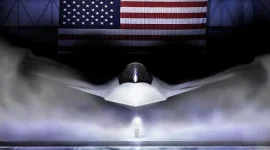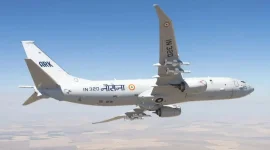- Views: 4K
- Replies: 24
Aerospace giant Boeing is contemplating the significant step of restarting its C-17 Globemaster III production line, a move that aligns closely with India's urgent military modernisation goals and recent reforms to its defence procurement process.
The potential revival comes nearly a decade after the assembly line was closed in 2015 and is fueled by renewed global interest, particularly from key operators like India who are seeking to replace their aging transport fleets.
On June 18, 2025, India's Ministry of Defence (MoD) announced a major policy shift aimed at accelerating military acquisitions. The new guidelines prioritise the use of advanced simulations over time-consuming and lengthy physical field trials to expedite the procurement of critical platforms.
This reform is seen as a direct enabler for a potential order of additional C-17s, as the Indian Air Force (IAF) urgently needs a modern replacement for its Soviet-era Ilyushin Il-76 aircraft.
Speaking at the Paris Air Show 2025, Boeing’s Vice President of Global Services-Government Services, Turbo Sjogren, confirmed the company is in "very early" discussions with an undisclosed nation about reviving the C-17 line.
He also noted significant interest from several other countries, including India, Kuwait, Qatar, and the United Arab Emirates, all of which currently operate the strategic airlifter.
The C-17 is a cornerstone of the IAF's strategic airlift capability. The fleet of 11 aircraft, based at Hindon Air Force Station, has been indispensable in a variety of high-stakes missions.
Its ability to carry a payload of 77.5 tons over 8,700 kilometers and operate from short, unprepared runways gives it unparalleled tactical flexibility. This was demonstrated during the 2023 earthquake relief efforts in Turkey and Syria and in critical military operations, including deployments during the 2025 India-Pakistan clash and support for the MV Ruen rescue.
In contrast, the IAF's approximately 20 IL-76 aircraft, acquired in the 1980s, are increasingly hampered by age, lower reliability, and limited payload capacity.
The IAF has formally projected a need for 12 to 15 additional heavy-lift aircraft to replace this fleet and bolster its ability to rapidly deploy troops and heavy equipment, such as tanks and helicopters, to contested border regions with China and Pakistan.
India's ambition to expand its C-17 fleet is not new. A 2011 deal for 10 aircraft included an option for six more, but only one additional unit was acquired in 2019 due to budgetary constraints and procedural delays.
A subsequent proposal in 2015 for three more C-17s stalled, leading to a missed opportunity before Boeing ceased production.
The MoD's new simulation-based acquisition framework, however, could prevent a repeat of these past delays.
Despite the renewed interest, restarting the C-17 production line presents a formidable challenge for Boeing. The original manufacturing facility in Long Beach, California, has been decommissioned, meaning a new site would need to be established.
A 2013 study by the RAND Corporation estimated that producing 150 new aircraft at a new facility could cost as much as $8 billion. This figure does not account for the complexities of reactivating a global supply chain, training a skilled workforce, and potentially integrating modern upgrades like advanced avionics or more fuel-efficient engines.
Sjogren has emphasised that firm, committed orders are essential to justify such a massive investment.
For India, challenges also remain. The nation's defence procurement system has historically been plagued by bureaucratic delays.
While the new simulation-based approach is designed to be faster, some experts and defence observers have raised concerns about its reliability, suggesting that completely replacing physical trials is a "risky shortcut."
Furthermore, fiscal discipline, such as the reported slow capital expenditure in the first month of the financial year, could constrain a large-scale order unless funding is specifically prioritised for this critical need.
Although, a successful C-17 production restart would offer substantial strategic benefits.
For India, it would significantly enhance its military airlift capacity, reinforcing deterrence along its borders and boosting its role as a leading provider of humanitarian aid and disaster relief globally.
For Boeing, it would revitalise a key product in its defence portfolio, reaffirming the C-17's position as a strategic airlifter with capabilities in range and payload that competitors like the Airbus A400M cannot match.



